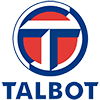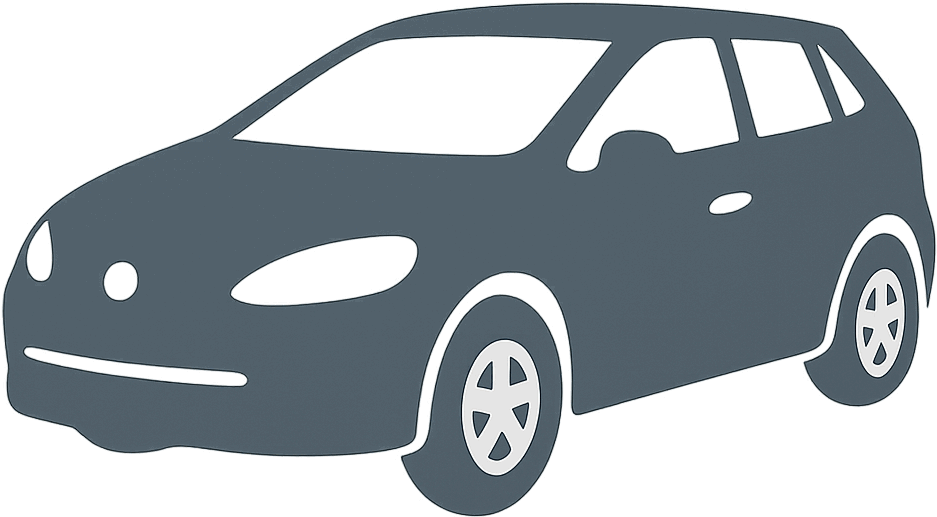 1975 Talbot 1307-1510 Dimensions, Size & Specs
1975 Talbot 1307-1510 Dimensions, Size & Specs
The Talbot 1307-1510 generation, produced from 1975 to 1984, represents a significant chapter in European compact hatchback design during the late 20th century. This range was introduced by Talbot as a versatile hatchback offering, catering to consumers seeking practical urban mobility fused with innovative styling for its era. The Talbot 1307 and 1510 models shared the same foundational platform but varied mainly in engine displacement and trim levels, targeting a broad market segment.
Measuring approximately in the compact segment, the Talbot 1307-1510 offered a balance between interior space and exterior dimensions. Typically, hatchbacks of this era and class displayed lengths around 4 meters (about 157 inches), widths close to 1.7 meters (67 inches), and heights near 1.4 meters (55 inches), though exact dimensions varied slightly with trim and model year. The hatchback body style provided a practical rear cargo area accessible through a rear door, boosting utility without compromising the car's compact footprint.
Throughout its production run, the Talbot 1307-1510 was recognized for its front-wheel-drive layout, a hallmark of many efficient hatchbacks of the time, contributing to improved interior space and better handling. The models combined efficient engines with moderate weight, facilitating decent driving dynamics and fuel economy.
Talbot's decision to produce the 1307-1510 over nearly a decade reflects the model's adaptability and appeal amidst evolving automotive trends. While specific dimensions and weights may vary across variants and years, the overarching characteristics remain a testament to Talbot's commitment to creating practical, reliable hatchbacks suited for European city driving and everyday use. Today, the Talbot 1307-1510 remains a notable example of the compact hatchback segment from the 1970s and 1980s, representing an important era of automobile history where hatchbacks gained widespread popularity.
Discover the standout features that make the 1975 Talbot 1307-1510 a leader in its class
Have a question? Please check our knowledgebase first.
The Talbot 1307-1510 hatchback, produced between 1975 and 1984, features compact yet practical dimensions well-suited for urban driving and family use. It has an overall length of approximately 4130 mm (162.6 inches), a width of about 1690 mm (66.5 inches), and a height near 1370 mm (53.9 inches). These dimensions helped the car maintain a manageable size for parking and maneuvering in city environments, while still optimizing interior space. The relatively low height contributes to improved aerodynamics and a sporty appearance typical of hatchbacks from its era.
The Talbot 1307-1510 features a wheelbase of approximately 2580 mm (101.6 inches). This dimension plays a critical role in defining the interior cabin space and ride comfort. A wheelbase of this length provides a balanced compromise between agility and passenger room, offering sufficient space for four to five occupants without making the vehicle overly large. The 2580 mm wheelbase ensures good legroom for front and rear passengers, while also contributing to a stable ride quality, which was well-regarded in this model's segment during its production years.
The curb weight of the Talbot 1307-1510 hatchback typically ranges from around 950 kg to 1050 kg (2094 to 2315 pounds), depending on the specific trim and engine variant. This relatively light weight, especially for a five-door hatchback of its size and era, contributes to its overall fuel efficiency and nimble driving characteristics. The moderate weight allows the vehicle’s modest engine options to deliver adequate acceleration and handling, keeping the car both economical and practical for everyday use. Additionally, the light curb weight aids in lowering the center of gravity, enhancing stability and road holding.
The Talbot 1307-1510 offers a ground clearance of approximately 140 mm (5.5 inches). This clearance is fairly standard for hatchbacks designed primarily for urban and paved road use during the 1970s and early 1980s. It provides sufficient protection against common road obstacles like speed bumps and minor potholes, while still contributing to a lower center of gravity for improved handling. However, the clearance is not optimized for rough or off-road conditions, making this car best suited for city driving and well-maintained roads rather than uneven terrain.
The Talbot 1307-1510 offers versatile cargo space typical of compact hatchbacks of its time. When the rear seats are in place, the cargo capacity is around 350 to 400 liters (12.4 to 14.1 cubic feet), adequate for groceries, weekend luggage, or small furniture. By folding down the rear seatbacks, the cargo volume expands considerably, allowing for larger or longer items to be transported with ease. This flexibility made the 1307-1510 popular among buyers looking for a practical vehicle that can serve both passenger and cargo needs efficiently.
Yes, the Talbot 1307-1510 fits comfortably into a standard residential garage. With an overall length of about 4130 mm (162.6 in) and width of 1690 mm (66.5 in), it is smaller than many modern vehicles and well within typical garage dimensions, which generally start at around 5500 mm (18 feet) in length and 2700 mm (9 feet) in width. The relatively low height of approximately 1370 mm (53.9 in) also ensures it clears most garage door heights easily. Therefore, parking this hatchback in a standard garage should present no space issues, providing convenience and protection from the elements.
The Talbot 1307-1510 is essentially a continuation of the Simca 1307 line, with the Talbot branding introduced after Peugeot’s acquisition of Chrysler Europe. Dimensionally, the 1307-1510 models remained very similar to their predecessor Simca variants, maintaining the same approximate length of around 4130 mm (162.6 in), width near 1690 mm (66.5 in), and height about 1370 mm (53.9 in). This continuity ensured the car retained its compact hatchback utility, interior space, and maneuverability. However, under-the-surface engineering and badging changed more than the fundamental size, allowing it to stay competitive through gradual improvements rather than major redesigns.
When compared to similar hatchbacks from the mid-1970s to early 1980s, the Talbot 1307-1510's dimensions are very competitive. Vehicles like the Volkswagen Golf Mk1 and Ford Escort hatchbacks featured similar lengths ranging between 4000 mm and 4200 mm (157 – 165 in) and comparable widths around 1650 mm to 1700 mm (65 – 67 in). The Talbot 1307-1510 balanced size with interior capacity, providing a bit more rear seat and cargo room due to its relatively boxy, practical design. This made it an appealing choice among compact family hatchbacks, delivering a good mix of drivability and usable space.
The Talbot 1307-1510 came primarily as a five-door hatchback, which was somewhat innovative at the time when sedans and two-door coupes were dominant. Engine options ranged from smaller displacement units around 1.3 liters up to 1.5 liters, typically inline-four petrol engines that balanced performance and economy. These engines offered moderate power outputs suited for daily driving conditions. The 1307-1510's hatchback body provided versatility with rear seats that could fold down, optimizing cargo space. This combination of practical body style and reliable engines made it popular for both urban commuting and small family use.
The Talbot 1307-1510 generally delivers fuel economy figures typical for compact cars of its era, with averages in the range of 7 to 9 liters per 100 kilometers (26 to 33 miles per gallon) depending on the engine variant and driving conditions. Its simple mechanical layout, proven engines, and straightforward suspension contribute to ease of maintenance. However, because the Talbot brand was less common outside Europe, sourcing parts might be somewhat more challenging today. Regular upkeep includes standard checks of the carburetor or fuel injection system, brakes, and suspension components. Owners often appreciate the model's robust simplicity but should be mindful of rust prevention due to older bodywork materials.
